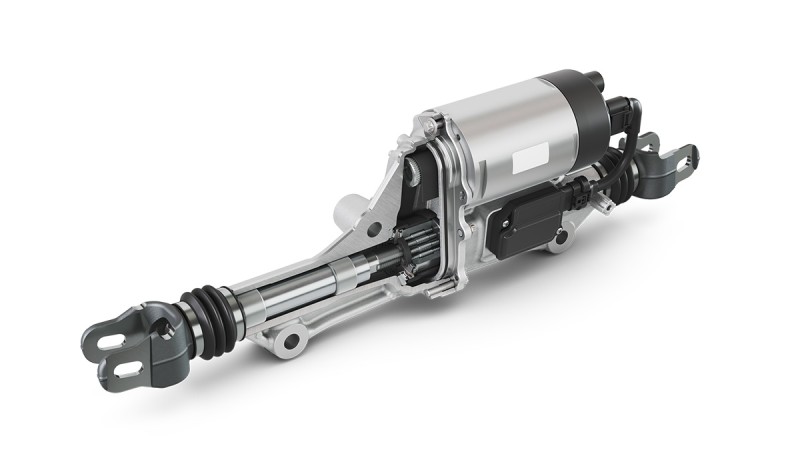Rear Wheel Steering (RWS)
By adding steering functionality to the rear axle, this technology improves a vehicle's maneuverability in city traffic, enhances lane-change stability, and makes parking easier. This is particularly beneficial for modern BEVs as it offsets the disadvantages of the longer wheelbase required by the underfloor battery position commonly found in such vehicles. However, vehicles of all powertrain types benefit from RWS, subsequently impressing with their enhanced agility and providing a more enjoyable driving experience.

Highlights
- Improved agility and driving dynamics – more fun to drive!
- Better stability and higher vehicle safety at higher speed
- At the heart of the mechanical system: Planetary Roller Gear (PRG) actuates efficiently and reduces required motor torque
Advantages
- Low motor torque required because of high efficiency during active operation due to use of PRG
- Steering in opposite direction compared to front steering
- decreases the turning cycle and increases the maneuverability
- at low speed increases the agility and improves vehicle dynamics
- Steering in same direction at higher speed increases the vehicle stability and improves vehicle safety
- Enabler for "driving 2.0": e.g. if the front wheel steering fails, the rear wheel steering serves as a fallback system to ensure the vehicle trajectory
Features
- High active force of up to 15 kN for quick and powerful actuation
- Low and high strokes available (up to 35 mm)
- Low system weight < 9 kg
- Self-locking in safe state (disabled system)
- Modular platform design
- Improved acoustics
- Highly accurate positioning
